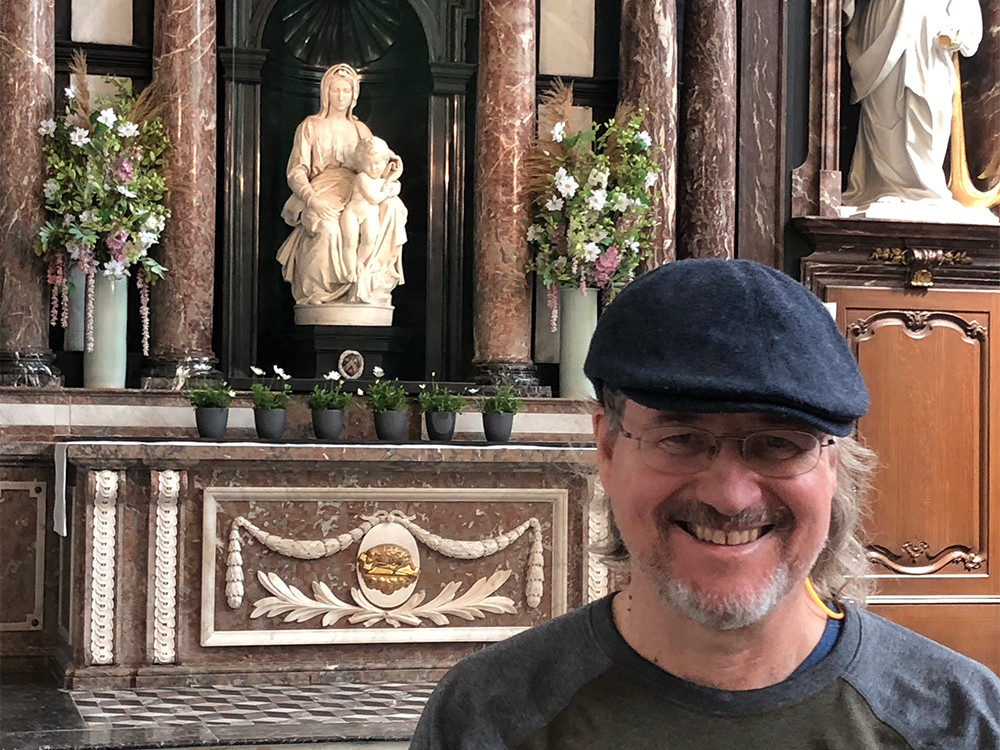In Amsterdam, my husband and I are scanning a bar menu that advertises Pornstar Martinis and trying to stay clear of patrons engaged in a rousing pool game. It’s our first plunge into the famed Red Light District, and after paying our tab, we stroll down the block. At night, the 15th-century Gothic church Oude Kerk glows over sex workers’ windows and rows of padlocked bikes. The contrast is surreal.
“We’re going to the Rijksmuseum tomorrow,” I remind him.
He grins. Amsterdam is a city known for liberal lifestyles as well as artistic masterpieces. Like many of his brother dudes living out college fantasies, Eric can snoop out a strong martini, but art is his real driver, and it’s best to be in an alert and lucid state when exploring paintings by Old Dutch masters Vermeer, Rembrandt, and Frans Hals. An artist who works in abstract style, Eric has studied great Flemish artists’ works prior to our trip and looks forward to exploring paintings and sculptures shown in churches and galleries. His zeal — for art rather than religion — means that he always carries a pair of binoculars when touring a museum.
At the Rijksmuseum in the borough of Amsterdam South, Eric pauses for protracted and hungry examination of Rembrandt’s painting The Night Watch, occasionally shifting his angles and position in the crowd. Meanwhile, I view three other paintings to the best of my nearsighted ability. To my frustration, the stream of visitors forces me farther from the art. Then, Eric presses the set of binoculars on me. “Try them,” he urges.
With curiosity, I loop the cord over my scarf and take a look. This is where the magic begins as rich details suddenly spring into focus. The jewels in bracelets worn on a woman’s wrist in Rembrandt’s The Jewish Bride gleam like characters in their own story, and lace patterns form a beautiful maze in The Merry Family. In other paintings, facial characteristics and loose brush strokes come into closer view. In this heightened scale, one can find elements not easily detected by the bare eye. Five hundred years later, it’s as if you’re standing with the artist in the act of creation, seeing details intended for your appreciation but that can get lost in large works and crowds.
“How does it look now?” Eric asks, confident of my delight. “Amazing,” I answer in surprise. Binoculars are essential tools at baseball games and golf tournaments, and some in more formal settings raise opera glasses. So why not brush off the dust remaining from the last ball game and scope out some art?
By the time we reach the Van Gogh Museum, I covet the art glasses. While my husband searches out tiny details in Almond Blossom and Sunflowers, I must politely wait my turn. Almond Blossom, one of my favorites, was gifted by the artist to his brother Theo and sister-in-law on the birth of their son. For the next phase of the trip, we ride the train to Ghent, Belgium, where we seek out The Adoration of the Mystic Lamb, the 15th-century polyptych altarpiece completed by Hubert and Jan van Eyck in 1432. Stolen by the Nazis, the piece was recovered by the Monuments Men from an Austrian salt mine in 1945. Today it hangs at Saint Bavo’s Cathedral, and once again, Eric generously passes his binoculars to me.
The new perspective elevates my experience, and now I see that The Lamb of God’s blood spills into the Holy Grail, something missed before with my poor vision. A former aristocrat, St. Bavo repented of enslaving others and distributed his wealth to the poor. One characteristic that Eric shares with a real saint is devotion. In these masterpieces, there is so much to contemplate, and yet my husband is the only visitor who thinks to use a set of binoculars to appreciate art. This middle-aged guy who routinely wears a navy beret spreads his own kind of gospel, leading family members and friends to look deeply and consider the miracle of artistic conception and execution.
Next time you visit Dixon Gallery & Gardens or Memphis Brooks Museum of Art, you might find him peering closely — very, very closely — at a canvas. Follow his example, and you might view the next painting — really, all of the paintings to come — in a cool new way. Art glasses, anyone?
Stephanie Painter is a local freelance writer and author of the children’s picture book Liz Tames a Dragon (and Her Anger).
